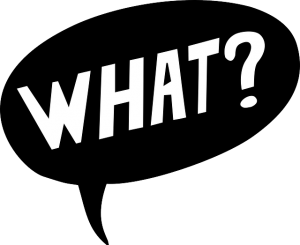What is a Theoretical Framework in Research?
To better understand what a dissertation theoretical framework consists of, it may be best to understand the place of theories in academia. Theories are often formulated by scholars to explain different phenomena in a way that extends current knowledge.
Theoretical frameworks, therefore, are structures that help bind and hold the theory together by supporting the research study. Through a dissertation theoretical framework, the student gets to understand the research problem under study and the theories that surround its existence.
While the particulars of writing a dissertation theoretical framework may be challenging and not so easy to understand, it does not mean that students can never get anything in relation to this topic. In fact, we are taking time to discuss what a dissertation theoretical framework consists of to help students understand all they need to know to write a dissertation.

Why should students care about a theoretical framework?
The first step when writing a dissertation is usually the identification of the problem and research questions. After this, a student should naturally work to determine the ideas and theories related to the problem you aim to solve.
A student who presents this information shows a knowledge of the models, theories, and concepts surrounding the topic and helps you define the direction that your research will take because research consists of step by step build-up of knowledge of the project.
Additionally, through the theoretical framework, the student justifies their scientific investigations. The person reading the dissertation will understand the background of the research as based on scientific theories and not just mere propaganda.
Determination of the contents of the theoretical framework
The contents of a dissertation theoretical framework are not foreign. In fact, they are mostly based on the ideas and theories that already exist based on the topic the student has chosen. The student, when writing the theoretical framework, therefore, will focus on components such as key terms, problem statement, and hypothesis. To identify what should be included in your theoretical framework, we recommend that you follow the steps outlined below:
- Selection of key concepts: The selection of key concepts involves knowing exactly what is important in the case scenario. For example, you may want to study why customers fail to return to a particular business to make purchases because you want to increase customer loyalty. Additionally, you may want the customer to come back so that you can generate more revenue. From the above statements, you can recognize a problem: the failure of clients to return. You can also recognize the objectives of the research: to increase revenue and customer loyalty. From the information above, you can formulate your research questions and understand the main concepts being dealt with such as customer satisfaction, loyalty, and these will be among the concepts that will be defined.
- Definition and evaluation of concepts: After selecting the concepts that need to be included in the dissertation theoretical framework, you will need to define them. But how exactly do you accomplish this? We recommend that you conduct a literature review in which you notice how other authors have done the same. This should be followed by a critical comparison of the different definitions done by different authors before you choose which is best for you and your research. Also, establish and indicate the links between the various concepts you are defining and describe theories relevant to the topic and research.
- Addition of other elements into the theoretical framework: It may be helpful to review the state of affairs as per your topic, but this largely relies on the lecturer and the course you are undertaking. Understand that practical problems do not often require an overview compared to theoretical problems. As you analyze prior research, you will understand what those in the field already know and thus clarify the position you take as of the moment in the research field. To come up with a solid overview, consider following the steps below:
- Let the reader know the existing discussions surrounding your topic
- Explain the theories, models, and ideas adopted by these other authors and look at how relevant or not the theories are to your research.
- Look at the similarities and differences between the previous studies and the one you are conducting.
- Let the reader know how your study contributes to the topic.

What kinds of questions does a theoretical framework answer?
Theoretical frameworks answer questions that require desk research. These are questions that can be answered using only literature. An example of such a question is:
What is the relationship between employee satisfaction and employee retention?
However, a dissertation theoretical framework cannot be used to a question such as:
What is the level of employee satisfaction in Company B?
This is because this type of question needs more than just a literature review to be answered efficiently. While you may need some prior knowledge about customer satisfaction to serve as the backbone for your research, you will need research to establish an answer. You may also need the literature review to help you with formulating and evaluating your hypothesis but will not be sufficient in answering the question completely.
Structure of a theoretical framework
Just like any other piece of writing that you will undertake in college or university, the dissertation theoretical framework needs a logical structure. Some of the factors that will determine the structure of your dissertation theoretical framework include:
- Your research questions/hypothesis
- Keywords
You will, therefore, create sections or paragraphs for these questions and key concepts and use the opportunity to explore models and theories related to the subject as well while at it.
How long is a dissertation theoretical framework?
While the specifics of length are not clearly stated anywhere, it is important that you use an average of two to five pages for your dissertation theoretical framework as this will give you enough space to include everything that you may find useful. The following is a checklist of items to include in the theoretical framework:
- Key concepts in your research, hypothesis and problem statement
- Theories and models relating to the research
- The theories and models that as the writer of the dissertation you choose to use to answer the question.
- The relationship between concepts
- The main articles you will be referring to

How a theoretical framework strengthens a study
When the writer explicitly states a dissertation theoretical framework, the reader or instructor can be able to able to evaluate the work of the reader. The dissertation theoretical framework also helps the reader understand the existing knowledge on the topic of choice. It is also beneficial to the writer to help them articulate their thoughts and answer the why and how. The writer, therefore, comes from a place of simply describing a scientific phenomenon of being able to understand the research question fully.
A dissertation theoretical framework is, therefore, the backbone of a dissertation. It should be written with a lot of care and concentration. If, however, for any reason you are unable to come up with a definitive dissertation theoretical framework, feel free to contact All Homework Solutions for our custom-writing services and we will help you write the best dissertation theoretical framework.
You might also be interested in:
How to choose a dissertation topic.
Do you need help with this assignment or any other? We got you! Place your order and leave the rest to our experts.
